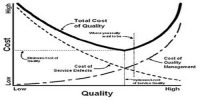Principles of Cash-flow Estimation
Cash flow estimation is a must for assessing the investment decisions of any kind. To evaluate these investment decisions there are some principles of cash flow estimation. In any kind of project, planning the outputs properly is an important task. Estimating the cash flow of a project is necessary and one of the most challenging parts of capital budgeting.
(1) Separation Principle: The Separation Principle is used to bring out the project cash flows of a particular project. It is an important part of capital budgeting. Before starting a new project, it is very important to estimate properly the inflow and outflow of cash. There are several methods that are used to bring out the exact figure of the project cash flow and Separation Principle is one of those methods.
(2) Incremental Principle: The incremental principle is used to measure the profit potential of a project. According to this theory, a project is sound if it increases total profit more than total cost.
(3) Consistency Principle: Carty Principle is one of the four major principles that are used for estimating the project cash flows. According to this principle, consistency in the cash flows is very necessary. At the same time, consistency in the applicable discount rates on the cash flows should also be maintained. There are two important factors that are related to the Consistency Principle These two are the investor group and the inflation.
(4) Post Tax Principle: Post Tax Principle is one of the basic principles of cash floss estimation. This is used to bring out the project cash flows with accuracy. After tax calculations are suggested by the Post Tax Principle for the project cash flow. There are some businesses that generally neglect the payment of tax while measuring the cash flow of a project. Next, these businesses try to cover the fault by using the discount rate. These discount rates are very hard to adjust and thus the after-tax rate of discount and after-tax cash flows are used jointly.(4) Post Tax Principle:
















